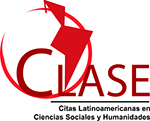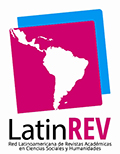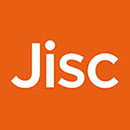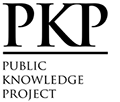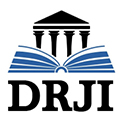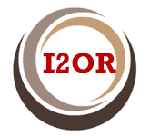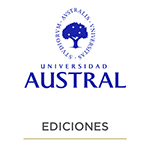COVID-19 and Patent Waivers. Between Fable and History
Abstract
Even though the response of the world's public and private scientific system to the need to develop vaccines against COVID-19 virus has been extraordinary and that intellectual property rights have played a fundamental role in these developments, some governments and Non-Governmental Organizations have presented proposals and requests to limit, suspend or even prohibit these rights related to COVID-19 vaccines.
A significant part of these arguments has been based on citing, as proverbial examples, the cases of vaccines to eradicate poliomyelitis and the invention of monoclonal antibodies, arguing that the developers refused to patent these inventions as an altruistic gesture for the benefit of mankind, guaranteeing wide access and low cost.
However, the historical review of the scientific developments of Jonas Salk and Albert Sabin for the polio vaccines and of César Milstein (together with Georges Köhler) for the invention of monoclonal antibodies and their relationship with the respective patent applications, does not allow us to identify a desire not to patent in two cases, nor a cause-effect relationship in the three cases. Justifying the request to limit vaccine patents for COVID-19 in these three historical cases is not only unfounded, but also omits that the lack of patenting caused these inventions to remain in the public domain, with pharmaceutical companies and not academic institutions being the main beneficiaries in economic terms.
The existence of patents on these inventions, on the contrary, would have assured their developers exclusive rights to control market variables including the price of products, license their inventions to whomever they wished and apply minimal royalties to redirect them into virtuous circles of invention, development and innovation.
Downloads
References
Academia Nacional de Medicina. (2003). César Milstein. https://anm.edu.ar/cesar-milstein/.
Acuerdo sobre los Aspectos de los Derechos de Propiedad Intelectual relacionados con el Co-mercio. (2021). Sección 5, Patentes, Artículo 28º, Derechos conferidos. Acuerdo sobre los Aspectos de los Derechos de Propiedad Intelectual relacionados con el Comercio (ADPIC). Organización Mundial del Comercio. https://www.wto.org/spanish/docs_s/legal_s/31bis_trips_04c_s.htm#Footnote6.
Bär, N. (2018). El combustible del genio. Noticias UBA. http://www.uba.ar/noticiasuba/nota.php?id=20740.
Bernardo, A. (26 de agosto de 2015). ¿Por qué Jonas Salk no quiso patentar vacuna contra la polio? Hipertextual. https://hipertextual.com/2013/08/patentar-vacuna-contra-polio.
Castelli, S. y Leiva, M. C. (16 de octubre de 2019). Inventor sin invento. Comercio y Justicia. https://comercioyjusticia.info/opinion/inventor-sin-invento/.
Eichmann, K. (2005). The Patent Disaster. En Kohler’s Invention (pp. 90-98). Springer Science.
Esparza, J. (2013). A brief history of the global effort to develop a preventive HIV vaccine. Vaccine, 31(35), 3502-3518. https://doi.org/10.1016/j.vaccine.2013.05.018.
Friedman, A. (2021). Albert Sabin. http://www1.biologie.uni-hamburg.de/b-online/library/history/sabin.html.
González-Fernández, A. y Díaz de Espada, F. (2011). César Milstein: 35 años de anticuerpos monoclonales. Inmunología, 30(1), 30-33. https://www.elsevier.es/es-revista-inmunologia-322-articulo-cesar-milstein-35-anos-anticuerpos-S0213962611700129.
Hamidi, A. y Bakker, W. (2012). Innovative IPV from attenuated Sabin poliovirus or newly designed alternative seed strains. Pharmaceutical Patent Analyst, 1(5), 589-599. https://doi.org/10.4155/ppa.12.70.
How Much Money Did Jonas Salk Potentially Forfeit By Not Patenting The Polio Vaccine? (9 de agosto de 2012). Forbes. https://www.forbes.com/sites/quora/2012/08/09/how-much-money-did-jonas-salk-potentially-forfeit-by-not-patenting-the-polio-vaccine/?sh=4deb20bd69b8.
Intellectual Property Expert Group. (2021). Jonas Salk inventor of the polio vaccine. Why did he not patent his invention? https://www.ipeg.com/jonas-salk-inventor-of-the-polio-vaccine-could-you-patent-the-sun/.
Jiménez Nácher, B. (7 de mayo de 2021). ¿Genérico Covid? “Levantar las patentes no favorece ni a corto ni a medio plazo”. La Información. https://www.lainformacion.com/asuntos-sociales/generico-covid-levantar-patentes-favorece-corto-medio-pazo/2837533/.
Kinsella, L. (2206). Patent and Penicillin. Mises Institute. https://mises.org/wire/patent-and-penicillin.
Kohler, G. y Milstein, C. (1975). Continuous cultures of fused cells secreting antibody of predetermined specificity. Nature, (256), 495-497.
Kreia, F. (29 de abril de 2021). ‘Unprecedented achievement’: who received the first billion COVID vaccinations? Nature. https://www.nature.com/articles/d41586-021-01136-2.
Lehtinen, L. y Rapela, M. A. (2021). COVID-19, Patentes y Vacunas: ¿Acceso o Transferencia de Tecnología? ElDial.com – Contenidos Jurídicos, elDial - DC2E02. https://www.eldial.com.
Medical Research Council. (1997). A missed opportunity? The patent saga. What is Biotech-nology? https://www.whatisbiotechnology.org/index.php/exhibitions/milstein/patents/The-monoclonal-antibody-patent-saga.
Miles, T. (21 de octubre de 2016). Polio vaccine makers failing to make enough doses - WHO experts. Reuters. https://www.reuters.com/article/health-polio-idUSL8N1CR5UJ.
Ministerio de Salud. Argentina. (2021). Chau Polio. http://www.msal.gob.ar/index.php/component/content/article/46-ministerio/547-chau-polio.
Modlin, J. F. y Chumakov, K. (2020). Sabin Strain Inactivated Polio Vaccine for the Polio Endgame. The Journal of Infectious Diseases, 221(4), 504-505. https://doi.org/10.1093/infdis/jiz077.
Organización Mundial de la Salud. (2020). Listings of WHO’s response to COVID-19. 29 June 2020 Statement. https://www.who.int/news/item/29-06-2020-covidtimeline.
Organización Mundial de la Salud. (2021). Draft landscape and tracker of COVID-19 candidate vaccines. World Health Organization, 28 May 2021. https://www.who.int/publications/m/item/draft-landscape-of-covid-19-candidate-vaccines.
Organización Mundial del Comercio. (2 de octubre de 2020). Waiver from certain provisions of the TRIPs Agreement for the prevention, containment, and treatments of COVID-19. Communication from India and South Africa. Council for Trade-Related Aspects of Intel-lectual Property Rights. Documento IP/C/W/669. https://docs.wto.org/dol2fe/Pages/SS/directdoc.aspx?filename=q:/IP/C/W669.pdf&Open=True.
Rapela, M. A. y Lehtinen, L. (2 de mayo de 2021). Covid-19, propiedad intelectual, vacunas y soberanía en Cuba. Perfil. https://www.perfil.com/noticias/opinion/covid-19-propiedad-intelectual-vacunas-y-soberania-en-cuba.phtml.
Rapela, M. A. y Schötz, G. (2020). Covid-19, Derechos de Propiedad Intelectual y Licencias Obligatorias. La Ley, T. 2020-C, 1-6.
Rapley, R. (1995). The biotechnology and applications of antibody engineering. Mol Biotechnol, (3), 139-154. https://doi.org/10.1007/BF02789110.
Salk Institute for Biological Studies. (2021). About Jonas Salk. https://www.salk.edu/about/history-of-salk/jonas-salk/.
Smith, J. S. (1990). Patenting the Sun: Polio and the Salk Vaccine. Harper Collins.
Suess, J. (10 de mayo de 2019). Our history: Sabin and Salk competed for safest polio vaccine. Cincinnati Enquirer. https://www.cincinnati.com/story/news/2019/05/10/our-history-albert-sabin-jonas-salk-competed-for-safest-polio-vaccine/1140590001/.
Tansey, E. M. (Ed.). (1997). Technology transfer in Britain: the case of monoclonal antibodies. Welcome Institute for the History of Medicine.
Universidad de Cambridge. (2002). César Milstein, Nobel Laureate and co-inventor of the hybridoma technique for the production of monoclonal antibodies, died this weekend on Sunday 24 October 2002. https://www.cam.ac.uk/news/c%C3%A9sar-milstein-1927-2002.
Vercesi, A. (2021). Rosario y las patentes de las vacunas. La Capital. https://www.lacapital.com.ar/cartas-lectores/rosario-y-las-patentes-las-vacunas-n2659505.html.
Copyright (c) 2021 Miguel A. Rapela

This work is licensed under a Creative Commons Attribution-NonCommercial-NoDerivatives 4.0 International License.
This license allows the copy, distribution, exhibition and representation of the work provided authorship is acknowledged and the work is properly quoted. Commercial use of the original work or the generation of derived works are not allowed.
The authors hereby guarantee the right to the first publication of the work to the Revista Iberoamericana de la Propiedad Intelectual.









